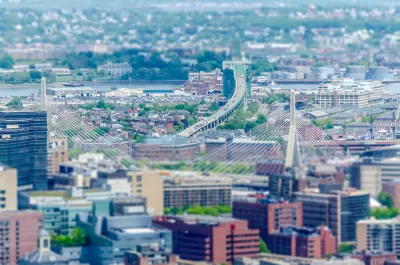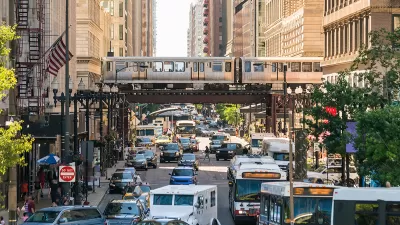The Boston Globe recently published an analysis of Boston-area traffic through the pandemic, finding that congestion is finally recovering to pre-pandemic levels, but in new patterns.

The traffic of 2021 is different than it was before the pandemic, according to an article by John Hancock explaining the findings of an analysis using traffic data from StreetLight Data, which uses location technology on mobile phones to measure traffic volumes.
According to the analysis of weekday traffic on Interstate 93, the Massachusetts Turnpike, and Interstate 95, traffic volumes still haven't recovered to 2019 levels. At three locations on the Turnpike, "average daily weekday traffic from April 1 through June 15 was still about 22 percent below 2019 levels," writes Hancock. Traffic on I-93 has been between 82 and 87 percent of pre-pandemic levels. Traffic on I-95 is hovering around 85 percent of where it was before the pandemic.
But one of the key findings of the analysis reveals more about how the characteristics of rush hour are changing. While the morning rush hour has been suppressed, traffic volumes can occasionally exceed pre-pandemic levels in the afternoon, and lasts for a longer duration of time.
According to Hancock, StreetLight data also finds similar trends at work in five other major U.S. metro areas. StreetLight describes the phenomenon of "morning and afternoon peaks in traffic were being replaced by traffic building gradually throughout the day toward a sustained afternoon high" as "peak spreading."
The article includes a lot more specific detail on the traffic data and also presents findings on the changes in weekend traffic in the Boston area. "After a year and a half of socially distancing throughout a pandemic, hourly travel data show that people are using all three roads on the weekend as much or even more than before," writes Hancock.
FULL STORY: How traffic has changed through the pandemic

Maui's Vacation Rental Debate Turns Ugly
Verbal attacks, misinformation campaigns and fistfights plague a high-stakes debate to convert thousands of vacation rentals into long-term housing.

Planetizen Federal Action Tracker
A weekly monitor of how Trump’s orders and actions are impacting planners and planning in America.

Chicago’s Ghost Rails
Just beneath the surface of the modern city lie the remnants of its expansive early 20th-century streetcar system.

Bend, Oregon Zoning Reforms Prioritize Small-Scale Housing
The city altered its zoning code to allow multi-family housing and eliminated parking mandates citywide.

Amtrak Cutting Jobs, Funding to High-Speed Rail
The agency plans to cut 10 percent of its workforce and has confirmed it will not fund new high-speed rail projects.

LA Denies Basic Services to Unhoused Residents
The city has repeatedly failed to respond to requests for trash pickup at encampment sites, and eliminated a program that provided mobile showers and toilets.
Urban Design for Planners 1: Software Tools
This six-course series explores essential urban design concepts using open source software and equips planners with the tools they need to participate fully in the urban design process.
Planning for Universal Design
Learn the tools for implementing Universal Design in planning regulations.
planning NEXT
Appalachian Highlands Housing Partners
Mpact (founded as Rail~Volution)
City of Camden Redevelopment Agency
City of Astoria
City of Portland
City of Laramie




























